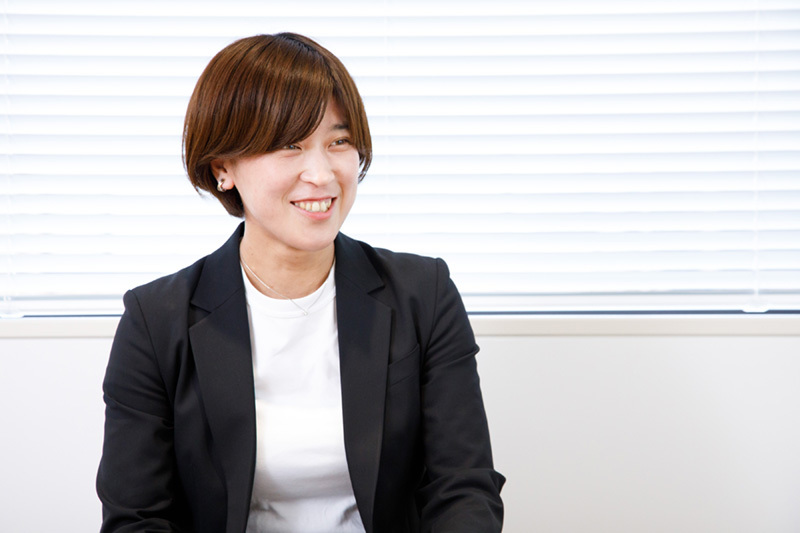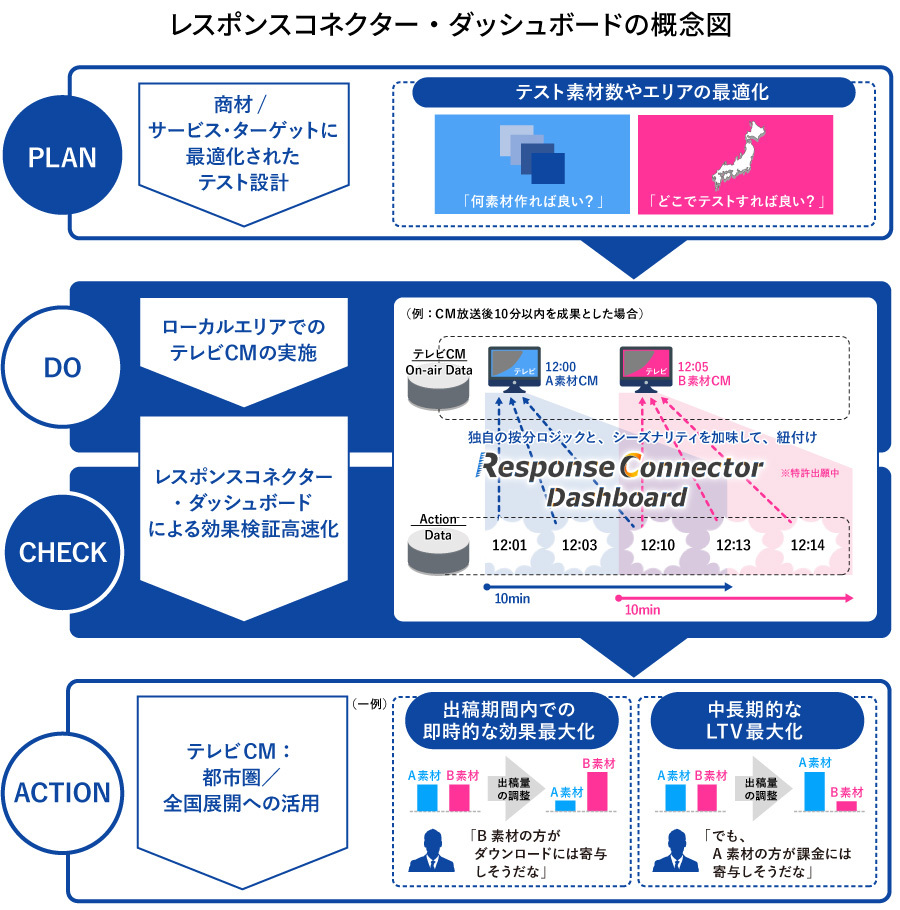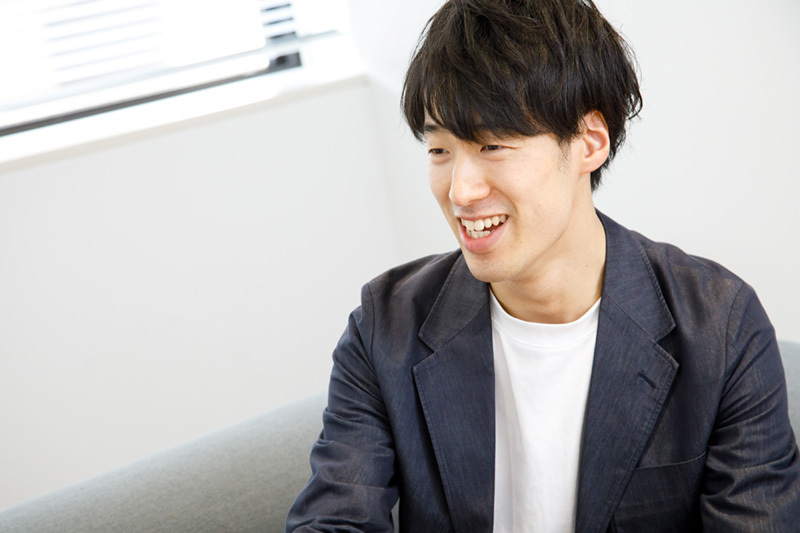While internet advertising spending continues to grow, TV commercial placements have been increasing in recent years, particularly among startups. Some companies are achieving significant advertising results. One such company is "hey," a startup supporting store digitalization. Its service "STORES" has steadily increased users by leveraging TV commercials.
【 What is STORES? 】
A platform supporting store digitalization. It offers the online store creation and management service "STORES," the cashless payment service "STORES Payment," and the online reservation system "STORES Reservation. " https://stores.jp
Why has hey been able to expand its business? What challenges did hey and Dentsu Inc. tackle together to maximize the impact of TV commercials?
In this series, hey's Marketing Director Yusuke Yamasaki, Dentsu Inc.'s Account Lead Mai Sakaguchi, and Planner Daiki Hama discuss the CM strategy for "STORES".
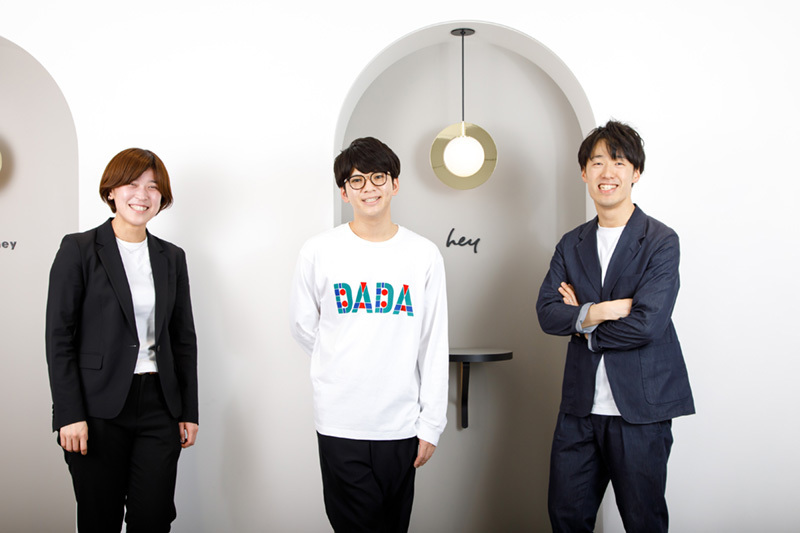
From left: Mai Sakaguchi (Account Lead, Dentsu Inc.), Yusuke Yamasaki (Marketing Director, hey), Daiki Hama (Planner, Dentsu Inc.)
TV commercials that fail to prompt viewer action are pointless
Sakaguchi: The "STORES" TV commercial began airing in November 2020 in the Kansai region and Fukuoka, gradually expanding to additional areas before launching nationwide this January.
Hama: I'm responsible for analyzing commercial effectiveness and planning placements, and honestly, the results have been surprisingly excellent—even for us. Could you revisit Mr. Yamazaki's marketing strategy and objectives for "STORES"?
Yamazaki: Previously, hey operated "online store setup/management services," "cashless payment services for physical stores," and "online reservation systems" under separate brand names. Last year, we consolidated these three services under the "STORES" brand. By launching the "STORES Platform" to support store digitalization, we significantly expanded the scope of business support we can offer our customers.
However, "STORES" was originally the brand for our "online store creation and management service." The public perception that "STORES = a service for creating online stores" was deeply ingrained. Therefore, we needed to shift the recognition structure to "STORES = a brand that enables online stores, cashless payments, and online reservations."
Setting up an online store is one means of digitizing a business, not the only one. A key challenge was increasing the number of users who, after learning about the "STORES" platform, would choose specific services.
Sakaguchi: To solve this challenge, my role involves establishing the overall TV buying strategy, selecting and securing broadcasters' commercial slots, and managing the allocation of commercial assets. Could you share again why you chose to utilize TV commercials?
Yamazaki: I believed TV commercials were appropriate for two reasons. First, against the backdrop of the COVID-19 pandemic, the need for store digitization was growing. Second, it was about changing the aforementioned "STORES" brand recognition structure.
Sakaguchi: From the very first orientation meeting, I was struck by how clear Mr. Yamasaki's intentions and objectives were. We also narrowed the KPI down to "new visits to the 'STORES' site within 30 minutes of the commercial airing," right?
Yamazaki: Yes. While we measure brand metrics separately, the sole optimization metric for the spot commercial is driving immediate site visits through searches right after airing. I fundamentally believe ads that fail to prompt viewer action are meaningless. So first, we needed to reliably drive site visits. Then, based on the results, we wanted to decide the next action and tune things quickly.
Hama: Quickly and accurately grasping ad effectiveness to swiftly take the next action. The "Response Connector Dashboard" was developed to meet that requirement.
[What is the Response Connector Dashboard?]
A tool that links each individual commercial to the advertiser's set KPIs, enabling detailed verification of campaign effectiveness. It analyzes which days and times the commercials were effective, visualizing the "immediate advertising impact" on users. Furthermore, it enables continuous analysis of "mid-to-long-term advertising impact," such as high-quality user responses, including LTV (Life Time Value). The measurement logic for this tool is patent-pending, and it has already been provided to over 50 companies ( release here ).
Hama: Response Connector visualizes various responses to TV commercials, such as brochure requests, phone inquiries, and social media posts. This time, we focused primarily on "new site visits" and decided on the analysis metrics for visitor characteristics across three services while discussing with Mr. Yamazaki.
Sakaguchi: While systems to measure responses existed before, they weren't utilized because the purpose wasn't clear, and manual processing made analysis time-consuming. This tool's key feature is the ability to check ad effectiveness on the dashboard the very next day. Marketing for "STORES" required a speed that could only be handled through a dashboard format.
"Isn't it strange to separate awareness and conversion?"
Hama: There's an unforgettable episode from the initial briefing. We often separate advertising roles into "awareness" and "conversion" (purchases, registrations, etc.). When we heard Mr. Yamazaki's briefing on the TV commercial strategy, I innocently asked, "So this order is for conversion commercials, right?"
Then he snapped back, "Wait, isn't it weird to separate awareness and conversion? Aren't we talking at a really basic level here?"
Yamazaki: I remember that (laughs).
Sakaguchi: Every Dentsu Inc. member present felt a chill run down their spine... (laughs).
Yamazaki: I believe boosting awareness and driving conversions must happen together to be meaningful. Why do they become separate tasks? Because typically, different departments handle each one. Advertising agencies also have their specialties, so sometimes different companies handle awareness and conversions separately.
But from the user's perspective, that separation is just for the convenience of the company or the ad agency. Think back to your own purchasing experiences—it's perfectly normal to see a commercial, search for it, and buy it all in one go, right? I believe you can do that in 15 seconds, and we're making it happen now.
Hama: I was troubled when you first pointed this out, but the more I listened to you, Mr. Yamasaki, the more I realized you were absolutely right. My thinking shifted to: How can we integrate awareness and conversion?
Sakaguchi: It really broadened our perspective, didn't it? Our team members ended up getting excited too, saying, "This project is actually fun!" (laughs). I think this was the starting point for everything, and it's why Yamasaki-san and we've been able to keep having such constructive discussions all this time.
Yamazaki: Rather than "My job is up to awareness" or "My job starts at conversion," it's more fun to discuss the overall correctness of the brand, right? That way, our perspective stays focused, and we avoid narrowing and optimizing roles.
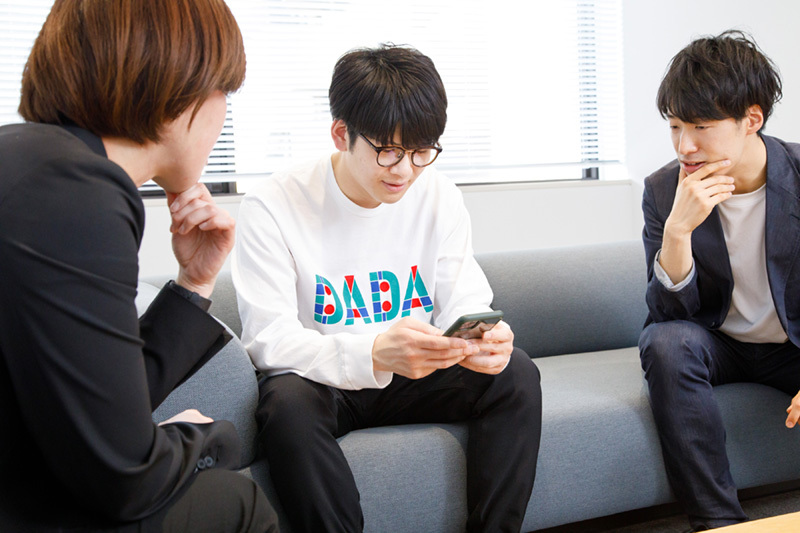
Purpose and hypotheses enhance data value
Sakaguchi: Earlier, I mentioned that the "Response Connector Dashboard" was born to match the speed of STORES' marketing. Indeed, the speed at which we run the PDCA cycle for ad placements is unparalleled.
Based on campaign results, we hold weekly meetings to validate hypotheses and decide next actions on the spot. By the end of the week, we've completed tuning broadcast areas, time slots, and creative selections, and the ads are on air. Since TV CM PDCA cycles typically take 2-3 months, this speed is extraordinary.
Hama: That's right. After a commercial airs, we receive the campaign data, spend two weeks analyzing it and compiling it into a PowerPoint presentation. The client then reviews this material internally for another two weeks, and their decisions are reflected in commercials airing two to three months later. That kind of pace is typical.
Yamasaki: But the market doesn't wait. Especially in recent years, consumer behavior is changing rapidly, and the level of digitalization varies by prefecture.
During a state of emergency, demand for online shops might surge. On the other hand, in areas where going out is possible, people can visit stores, so shouldn't we also run commercials for cashless payments? The key is how quickly and accurately we can propose the right creative and benefits tailored to the real-time situation.
Sakaguchi: This time, when producing the TV commercials, besides the "All-in-One Digital Store" version conveying "A brand where you can shop online, use cashless payments, and make online reservations," we also created materials specifically promoting each of the three services separately, as well as versions focused on the CTA (Call To Action) (※), per Mr. Yamazaki's request.
※CTA (Call To Action): Encouraging actions like searches. This includes adding search boxes or narration.
Then, while monitoring the Response Connector metrics, we adjusted the ratio of materials aired at certain times and switched to the CTA-focused versions. This boosted the efficiency of driving traffic to the site by a factor of three.
Yamasaki: That really brought home the impact of the commercial, and everyone involved in production got really pumped up.
Sakaguchi: At the weekly meeting, we decided to switch the commercial. It was implemented a few days later. At the meeting one week after that, we verified the effect and decided on the next action. People within the company were surprised, saying, "It's a TV commercial, but you're running PDCA cycles like digital ads, right?" (laughs).
Hama: Mr. Yamazaki's decision-making speed is terrifyingly fast, even for a startup.
Yamazaki: Isn't faster better? (laughs)
Another point is that we don't use the "Response Connector Dashboard" just to report commercial effectiveness to superiors. Sharing dashboard metrics internally could create a sense of "we're doing something." But as the marketing lead, that's not my job. My role is to formulate hypotheses based on the numbers, make quick decisions on next steps, and deliver results.
Hama: The Response Connector Dashboard only shows the results of ad placements, and how you interpret those results is crucial, right?
Yamazaki: Being able to quickly visualize TV commercial responses is groundbreaking. But no matter how much data you have, it's completely meaningless if you can't turn it into action. We use the Response Connector Dashboard data as a core for analysis, supplementing it with other external data to make judgments. The dashboard enables us to generate hypotheses and improves their accuracy.
Sakaguchi: As Mr. Yamazaki said, having systems and data doesn't mean everyone can achieve the same results. If a company's marketers lack clear objectives or hypotheses, and fail to demonstrate analysis of outcomes and concrete actions, any data becomes useless.
I'm embarrassed to admit it, but Mr. Yamazaki taught me that this is what driving the PDCA cycle is all about!
Hama: It was precisely because of that realization that Sakaguchi-san could move so swiftly—selecting and buying commercial slots, negotiating and managing relationships with each TV station.
When a client's clear decision-making and speed of judgment, a planner's hypothesis testing using tools, and a salesperson's coordination and execution capabilities all align, even TV commercials can achieve high-speed PDCA cycles to expand the business. Through the "STORES" commercial campaign that hey and Dentsu Inc. tackled hand-in-hand this time, I feel we proved this point.
―Next time, we'll cover key points for creating TV commercials that resonate with viewers and our approach to media! Stay tuned!




